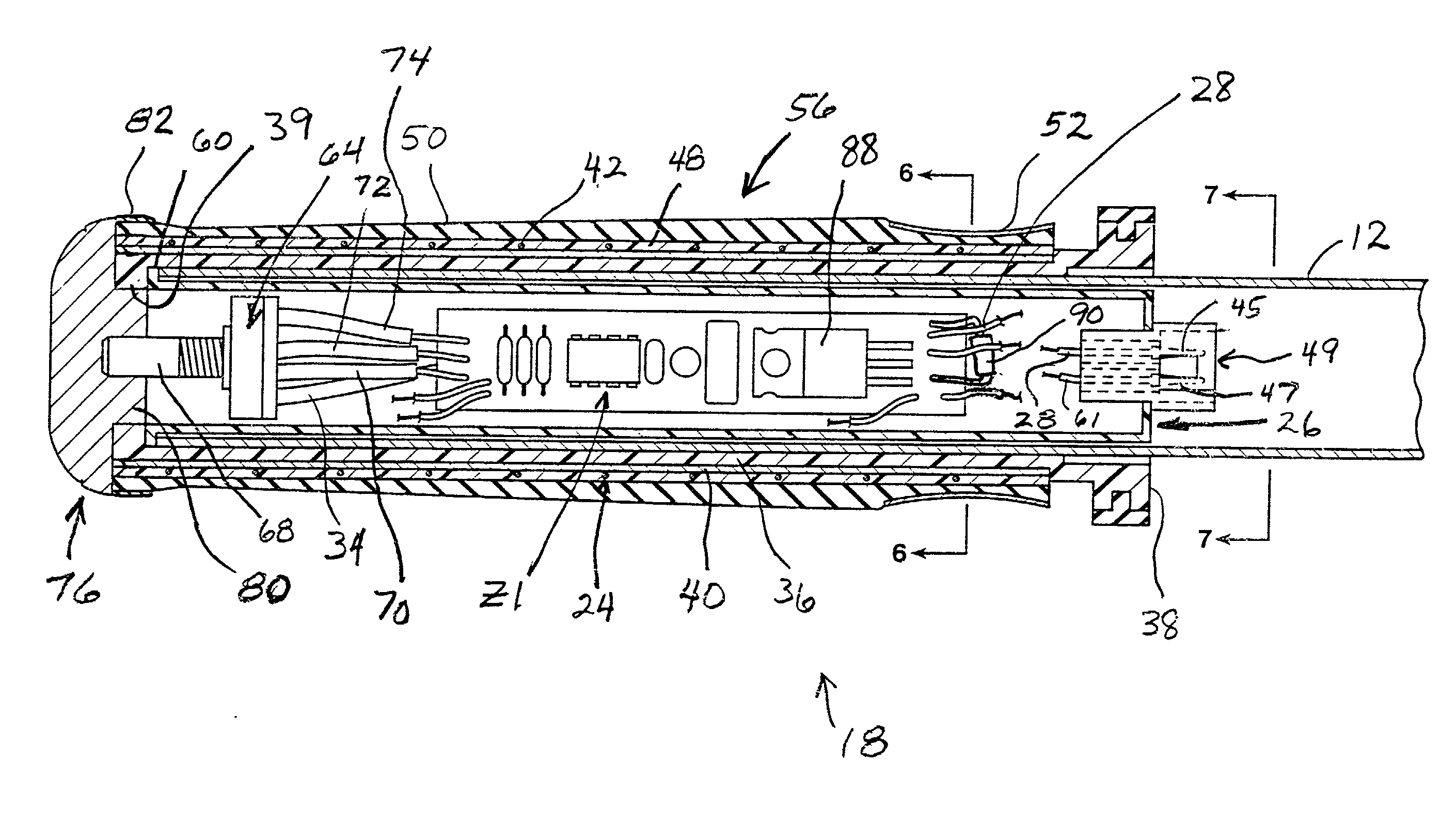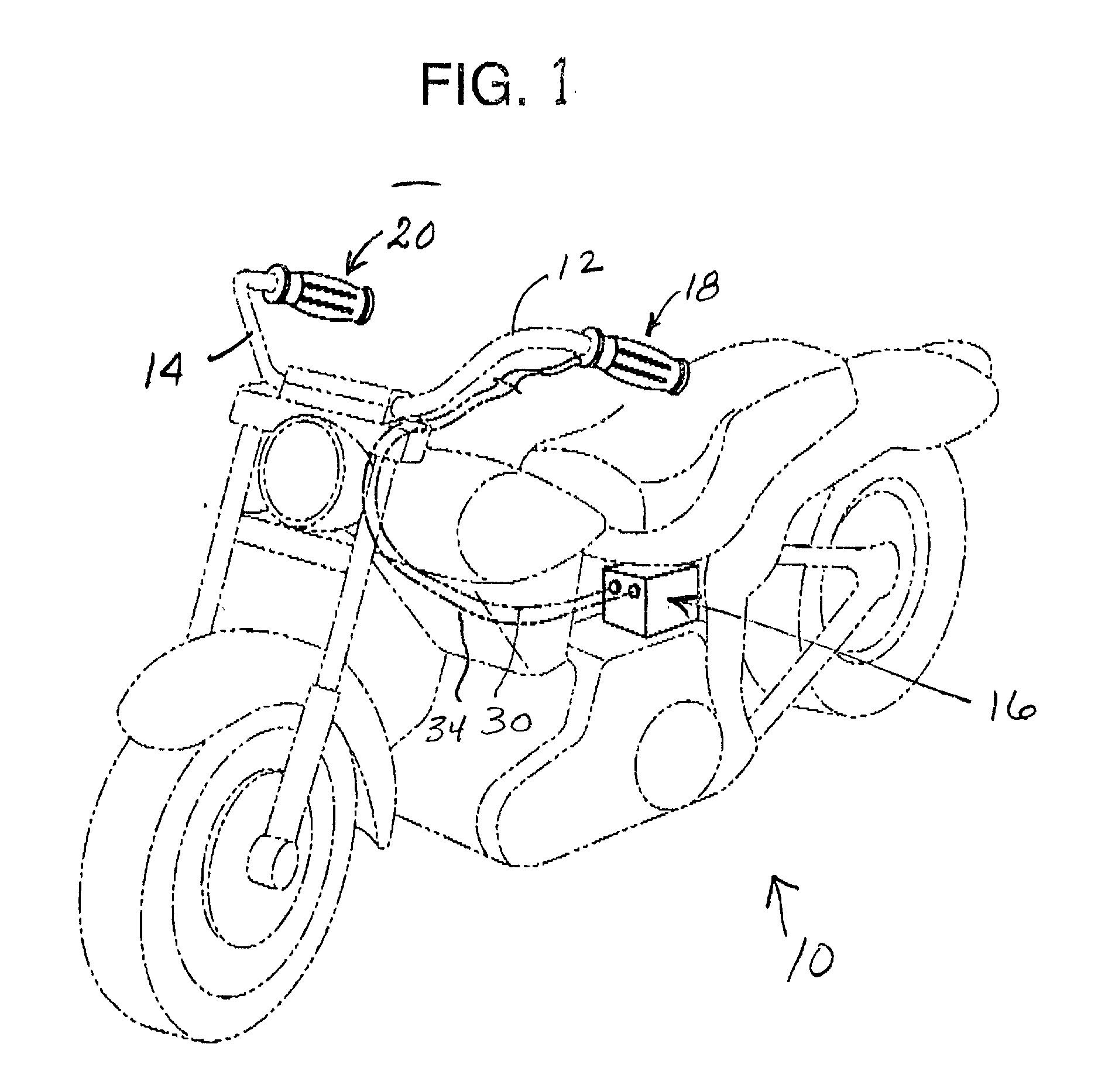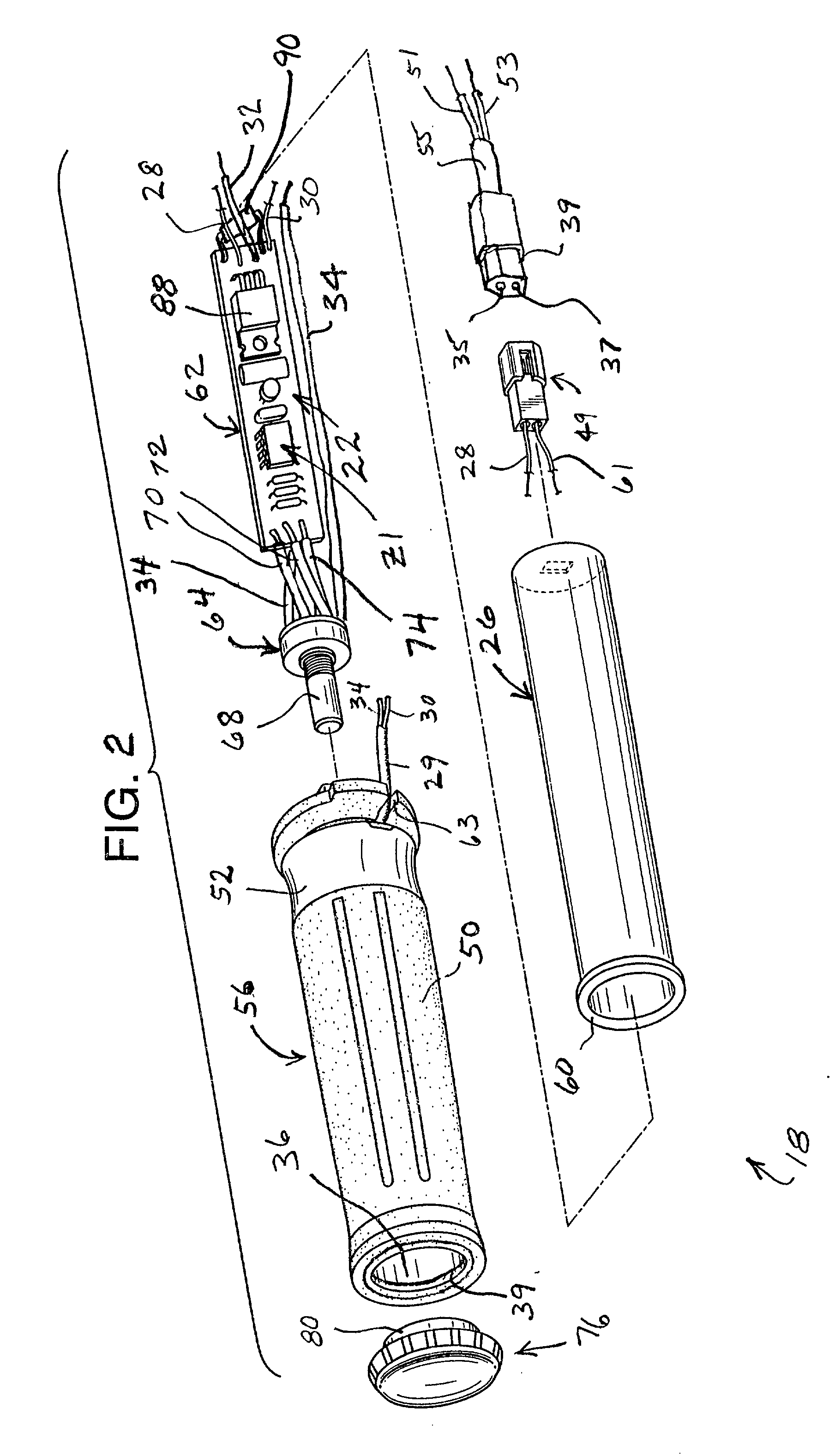Heated cycle grip
a technology of control circuit and heated grip, which is applied in the direction of cycle equipment, steering devices, transportation and packaging, etc., can solve the problems of heated grips being often damaged, improper or inattentive use, and electrical current passing through high-resistance electrical wires generating considerable hea
- Summary
- Abstract
- Description
- Claims
- Application Information
AI Technical Summary
Benefits of technology
Problems solved by technology
Method used
Image
Examples
Embodiment Construction
[0050] FIG. 1 illustrates a motorcycle generally at 10 equipped with hollow, stainless steel tubular handlebars and a set of heated vehicle handgrips. The left handlebar of the motorcycle 10 is indicated at 12, and the right handlebar is indicated at 14. Both of the handlebars 12 and 14 have open ends. The motorcycle 10 also includes a conventional lead-acid motorcycle electrical storage battery 16.
[0051] The motorcycle 10 is provided with a pair of heating cycle handgrips 18 and 20 constructed according to the present invention. The left motorcycle handgrip is indicated at 18, while the right motorcycle handgrip is shown at 20. The left motorcycle handgrip 18 is mounted coaxially upon the open end of the left handlebar 12, while the right handgrip 20 is rotatably mounted coaxially upon the open end of the right handlebar 14, since it is coupled to-the conventional throttle control.
[0052] The left handgrip 18 is shown in some detail in the exploded view of FIG. 2. The left handgrip ...
PUM
 Login to View More
Login to View More Abstract
Description
Claims
Application Information
 Login to View More
Login to View More - R&D
- Intellectual Property
- Life Sciences
- Materials
- Tech Scout
- Unparalleled Data Quality
- Higher Quality Content
- 60% Fewer Hallucinations
Browse by: Latest US Patents, China's latest patents, Technical Efficacy Thesaurus, Application Domain, Technology Topic, Popular Technical Reports.
© 2025 PatSnap. All rights reserved.Legal|Privacy policy|Modern Slavery Act Transparency Statement|Sitemap|About US| Contact US: help@patsnap.com



